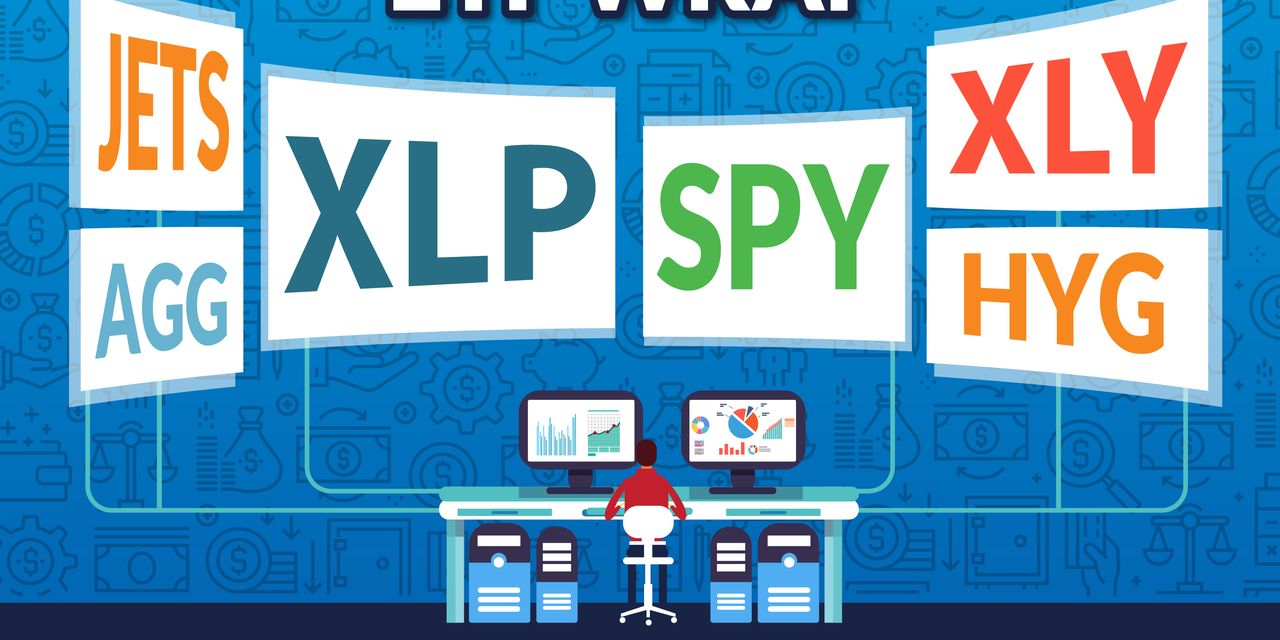Hello! This is markets reporter Isabel Wang bringing you this week’s ETF Wrap. In this week’s edition, I spoke with BlackRock’s Gargi Chaudhuri, head of iShares investment strategy for the Americas, about how ETF investors should play a world of rising interest rates with the Federal Reserve expected to raise interest rates further this year to quell inflation.
Please send tips, or feedback, to [email protected] or to [email protected]. You can also follow me on Twitter at @Isabelxwang and find Christine at @CIdzelis.
Sign up here for our weekly ETF Wrap.
U.S. investors in exchange-traded funds may want to consider stepping into medium-term fixed income ETFs which could provide “attractive carry” and act as a “buffer” against the volatile returns in the U.S. equity market, given the Federal Reserve’s interest-rate hiking path remains unclear, according to Gargi Chaudhuri, BlackRock’s head of iShares investment strategy for the Americas.
This week Fed Chair Jerome Powell this week doubled down on his hawkish tone that the central bank isn’t done with its aggressive monetary tightening campaign to combat inflation, though they may be approaching the end of the cycle,
See: Powell says he sees path where inflation cools without significant job losses
For example, Chaudhuri pointed to the iShares 3-7 Year Treasury Bond ETF
IEI,
which tracks an index composed of U.S. Treasury bonds with remaining maturities between three and seven years, as well as the iShares Core U.S. Aggregate Bond ETF
AGG,
which has a broad exposure to the U.S. investment-grade bond market, and iShares MBS ETF
MBB,
which tracks investment-grade mortgage-backed pass-through securities issued and guaranteed by U.S. government agencies, as three options for investors to consider.
Shares of IEI has risen 1.8% so far this year and saw inflows of $968 million year to date, while AGG has advanced 2.8% and recorded a total inflows of $7.9 billion in 2023, and MBB has jumped 2.5% and attracted $3.9 billion of inflows since the beginning of the year, according to FactSet data.
That compares with over $2.7 billion of outflows over the same period for the Invesco QQQ Trust ETF
QQQ,
which tracks the Nasdaq 100 index
NDX,
and rallied 36.3% in 2023 as the rapid rise of generative artificial intelligence created a frenzy on Wall Street.
AGG and MBB are also among the top 20 ETFs that have gathered maximum capital in 2023, per FactSet data.
“These flows are telling us that investors are thinking about the increasing role of fixed income in their portfolios,” Chaudhuri said, which is a “pivot” from how this asset class was viewed before 2022 when yields remained at near-zero levels as the Fed pinned the fed-funds rate near zero to support the economic recovery from the Covid-19 pandemic. As a result, “you really didn’t have much yield or any income from the high quality, fixed income markets,” Chaudhuri said.
However starting from 2022 a steep Treasurys selloff sent yields soaring after the central bank quickly raised its policy rate in its bid to bring down inflation that had hit a nearly four-decade high. The yield on the 10-year Treasury
TMUBMUSD10Y,
soared 2.33 percentage points in 2022 – the largest on record based on data going back to 1977, according to Dow Jones Market Data.
“Investors are realizing … if you’re holding too much cash, you are at the risk of missing out, especially when the bond or the stock market rallies. So perhaps moving out of cash into high quality ETFs both in the fixed income market and in the equities markets, especially if we are nearer to the end of the hiking cycle,” Chaudhuri told MarketWatch in a phone interview on Thursday.
See: Global growth outlook deteriorates on central bank rate hikes, raising risks for U.S. and markets
Meanwhile, Chaudhuri said her team has found that ETF investors are moving out from the “very low, very short-term” end of the yield curve to the “intermediate part and the longer-end of the curve,” as the [inflows into the] intermediate and long-term fixed income ETFs have picked up meaningfully.
If investors are getting in the one- to three-year part of the curve, such as the iShares 1-3 Year Treasury Bond ETF
SHY,
or iShares 1-5 Year Investment Grade Corporate Bond ETF
IGSB,
they are earning a lot of yields. However, what they are not getting is that interest-rate sensitivity and that diversification benefit which could only be offered by the medium-term Treasury ETFs, she said.
“So by no means is this a ‘or’ story? This is an ‘and’ story,” Chaudhuri said.
The 10-year Treasury note yield was at 3.796%, rising from 3.722% Wednesday afternoon. The yield on the 2-year Treasury note
TMUBMUSD02Y,
rose to 4.791% on Thursday.
As usual, here’s your look at the top- and bottom-performing ETFs over the past week through Wednesday, according to FactSet data.
The good…
| Top Performers | %Performance |
|
ProShares Bitcoin Strategy ETF BITO, |
16.9 |
|
United States Natural Gas Fund LP UNG, |
10.7 |
|
United States Oil Fund LP USO, |
5.2 |
|
iShares S&P GSCI Commodity-Indexed Trust GSG, |
4.9 |
|
iShares GSCI Commodity Dynamic Roll Strategy ETF COMT, |
4.3 |
| Source: FactSet data through Wednesday, June 21. Start date June 15. Excludes ETNs and leveraged products. Includes NYSE, Nasdaq and Cboe traded ETFs of $500 million or greater. | |
…and the bad
New ETFs
-
Global X ETFs Wednesday announced the launch of the Global X 1-3 Month T-Bill ETF
CLIP,
+0.10% ,
which provides investors with exposure to the short-term Treasury bill market. - Victory Capital Management Inc. Thursday launched the VictoryShares Free Cash Flow ETF which tracks the performance of the Victory U.S. Large Cap Free Cash Flow Index, which invests in profitable U.S. large-cap companies with high free cash flow yields and favorable growth prospects.
Weekly ETF Reads
Read the full article here











